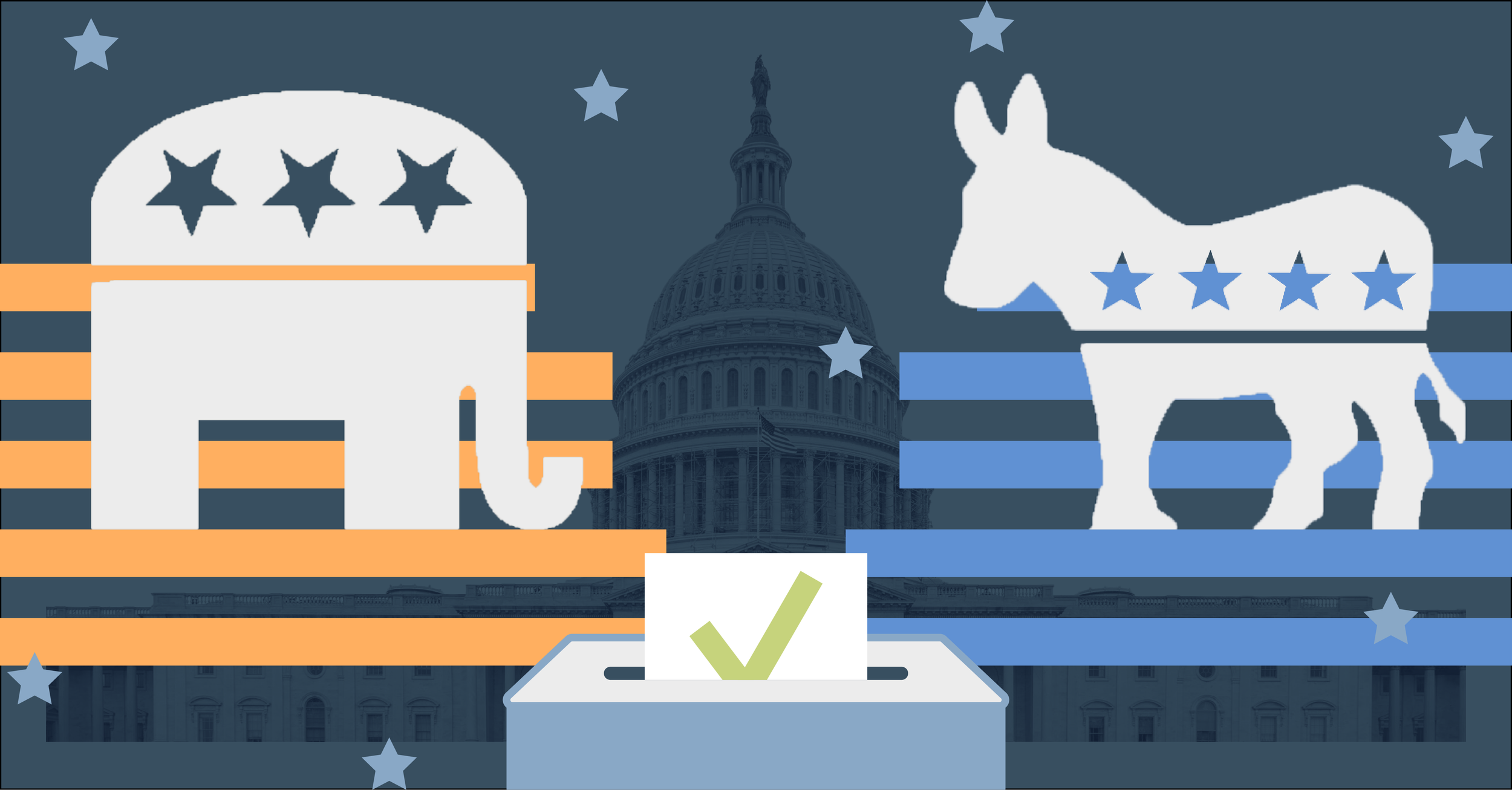Every four years, US citizens witness one of the largest and most globally impactful marketing campaigns: the presidential election. At its core, effective marketing is about persuasion. For a presidential candidate to win an election, they must succeed at convincing voters that they’re the right person for the job. The presidential race is not unlike familiar B2C consumer rivals, for example the marketing battle between Coca-Cola and Pepsi. Both brands use advertisements that aim to set up an argument as to why consumers should buy their product as opposed to their competitor’s. Soda, leader of the free world—both need to shake things up. Quite the bubbly competition, eh?
Branding the Ballot: Shaping the Public Persona
The grand marketing campaign for US president kicks into high gear in the year leading up to the election, when campaign materials rooted in core marketing principles are strategically rolled out. The first order of business: branding. While a politician’s personal brand should be a well-oiled machine, by the time they run for president that brand must be rock solid. In marketing, a brand is described as a company’s identity and a public-facing representation of what the company stands for. A successful brand must be authentic, but carefully managed. When you think of Coke, the colors red and white and images of silver cans and polar bears wearing sunglasses most likely flood your mind; a strong brand paints a clear image in consumers’ minds. The same is true for political candidates. A candidate’s brand is the face they put out into the world and the values they represent.
Mapping the Audience: Who’s in the Room?
As a candidate discovers how they want to be seen, they also need to figure out who they want watching. Using registered voter lists, online behavioral data, and a plethora of other information, candidates identify the individuals already in their corner and those they should aim to woo. It’s like figuring out which soda lovers are ready to jump from Pepsi to Coke (or vice versa). Candidates, like brands, can tailor messaging across different mediums, making them more appealing to specific target audiences.
For presidential candidates, their messaging is aligned with policy and legislative priorities. Are they the enthusiastic, hope-filled candidate? Or are they passionate and fiery? Knowing your audience means learning how to talk to them. With an understanding of their audience, candidates can market themselves more effectively, addressing the specific needs of different demographics. For instance, a candidate might emphasize job growth and access to healthcare in rural areas while focusing on climate change and social issues in urban centers. Coke does something similar: ads in warmer places show people cracking open a cold can to help beat the heat, while in chillier spots the ads focus on togetherness, making you feel like a sip of Coke will bring everyone closer during a snowstorm.
Brand Awareness and Equity: Getting Your Name Out There
At this point, we’ve laid the foundation for a solid campaign. However, to ensure that a candidate’s messaging reaches their intended audience, they need to build brand awareness. To do this, they deploy political ads, manage public relations, and hold rallies and events. The goal is to make sure voters know not only who the candidate is but also what they stand for. Just as Pepsi strives to be more recognizable than Coke, candidates seek to be top of mind for voters. The more familiar voters are with a candidate, the easier it is to persuade them. In fact, the marketing rule of seven states that someone needs to see or hear your message seven times before they take action.
Alongside awareness, establishing brand equity is critical. Brand equity reflects the value a recognizable brand brings to a company or campaign. Whether we’re talking about soda companies or presidential candidates, brand equity can be enhanced through slogans, logos, and branding that resonate with the public. Campaign slogans and songs can be traced as far back as 1840, when presidential candidate William Henry Harrison and his running mate, John Tyler, debuted their campaign slogan, “Tippecanoe and Tyler Too.”
2024 Election in Action: Marketing Tactics at Play
Now that we’ve established how marketing tactics play a central role in presidential campaigns, let’s explore how candidates in the 2024 election are applying these strategies.
First up is Democratic nominee and current vice president, Kamala Harris. This summer, Harris made waves with a rebrand of KamalaHQ (formerly BidenHQ) following the release of Charli XCX’s viral album, Brat. The album was an instant cultural phenomenon, particularly among Gen-Zers, and Harris’s campaign lost no time in jumping on the Brat-wagon. Characterized by a lime green color and signature Arial font, the transition to KamalaHQ mirrored the aesthetic of Brat and effectively caught the attention of young voters. The memes and social media buzz soon followed, positioning Harris as the “cool” candidate among younger voters. The rebrand wasn’t just a fun stylistic choice. It was a targeted strategy to reach new voters and engage a key demographic.
On the other side, former president Donald Trump continues to drive one of the most prolific marketing campaigns in modern politics, headlined by his “Make America Great Again” slogan. Since Trump launched his first presidential campaign in 2015, MAGA has become a grandiose symbol of his presidency and values. Most notably featured on a red hat with white text, the slogan reflects his supporters’ loyalty; according to his former campaign manager, by the spring of 2019 he’d sold nearly one million MAGA hats, and at $50 a pop, that’s some seriously successful marketing. MAGA merch has transcended its original purpose, evolving into a widely recognized symbol that even those outside Trump’s base can identify.
As described by Washington Post fashion critic Robin Givhan, the “Make America Great Again hat is not a statement of policy anymore. It’s a declaration of identity.” The MAGA movement is so widely recognized and synonymous with Trump’s presidency that the slogan has become completely disconnected from its original use during Ronald Reagan’s 1980 presidential campaign, reinforcing the power of consistent and memorable branding.
Whether it’s crafting a political campaign or selling soda, marketing principles like branding, audience targeting, and building awareness are at the heart of it all. As the 2024 election heats up, we look forward to seeing how presidential candidates use time-tested marketing principles to influence voters and shape public perception. After all, whether we’re talking about soda or the next leader of the free world, it’s all about how you sell it.



